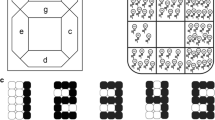Abstract
The central problem in scaling up oligonucleotide synthesis is to expose each element of a large bed to the same conditions obtaining in very small ones, for the same intervals of time. Our analysis suggests that scale-up is chiefly limited by fluid path length through the bed. By using annular beds in zonal centrifuge rotors of unique design, with fluid flow controlled by combining centrifugal force with differences in physical density between reagents, reagent fronts may be kept exactly perpendicular to the direction of flow in each bed element. Under these conditions, bed volume may be increased by increasing rotor length and diameter. The rotor is lined with polypropylene or Teflon®, and has a thick tempered glass end window. Transparent rotary valves of a unique design allow any of47 reagents to be selected and the direction of flow through the rotor to be controlled. A photodiode spectrophotometer provides complete absorption spectra on fluid in the rotor inlet and outlet lines every4 s, and a large balance weighs effluent from the synthesizer continuously. The entire operation is controlled by a work station, and steps may be programmed by time, absorbance, or reagent mass. Reagents are identified by spectra, and trityls are integrated on line. A detailed time-stamped log file provides a complete record of each synthesis.
Similar content being viewed by others
References
Riordan, M. L. and Martin, J. C. (1991),Nature 350, 442,443.
Bonora, G. M., Biancotti, G., Maffini, M., and Scremin, C. L. (1993),Nucleic Acid Res. 21, 1213–1217.
Carruthers, M. H. (1989), inOligonucleotides. Antisense Inhibitors of Gene Expression. Cohen, J. S., ed. CRC, Boca Raton, FL, pp. 7–24.
Gait, M. J. (1984),Oligonucleotide Synthesis. IRL Press, Oxford.
Haller, W. (1983), inSolid Phase Biochemistry, Scouten, W. H., ed. John Wiley, New York, pp. 535–597.
Anderson, N. G., ed. (1966),The Development of Zonal Centrifuges. National Cancer Institute. Monograph No. 21.
Anderson, N. G., Waters, D. A., Nunley, C. E., Gibson, R. F., Schilling, R. M., Denny, E. C., Cline, G. B., Babelay, E. F., and Perardi, T. E. (1969),Anal. Biochem. 32, 460–494.
Author information
Authors and Affiliations
Rights and permissions
About this article
Cite this article
anderson, N.G., Anderson, N.L., Taylor, J. et al. Large-scale oligonucleotide synthesizers. Appl Biochem Biotechnol 54, 19–42 (1995). https://doi.org/10.1007/BF02787909
Issue Date:
DOI: https://doi.org/10.1007/BF02787909




